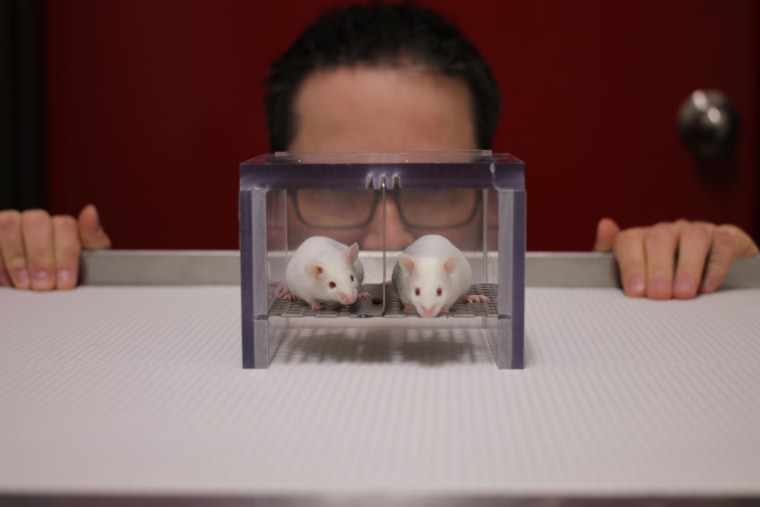Lab mice may already be a little freaked out, but male researchers really frighten them, researchers said Monday.
The team at McGill University in Montreal had noticed that they got different results when men or women worked with their mice — in this case in experiments that involved hurting the mice.
Sometimes the mice didn’t even seem to notice the pain. And it seemed to happen more with the men.
“Scientists whisper to each other at conferences that their rodent research subjects appear to be aware of their presence, and that this might affect the results of experiments, but this has never been directly demonstrated until now,” Jeffrey Mogil, a psychology professor at McGill who led the study, said in a statement.
It seems to have something to do with how men smell, they found. They did an experiment by putting T-shirts that men or women had worn in with the mice, and tested their fear and stress responses. For instance, a scared mouse will “hug” the walls of its cage. Mice also grimace in fear, and their temperature goes up, too.
The mice were stressed by the men’s shirts, but not the women’s.
It doesn’t seem to be any smell that people notice consciously, the researchers said.
“Our data suggest instead that an odor evoked by a cocktail of chemicals within the body secretions of isolated males (except cage mates) produce stress in rodents,” they wrote in their report, published in the journal Nature Methods.
And it might not even be anything human. Males of all mammal species may produce these pheromones.
But it’s something to keep in mind when trying to reproduce results. Mice may respond differently not so much because of the test itself, but in response to whoever is doing the testing, they reported.
“Our findings strongly suggest that standard laboratory practice should account for experimenter sex when investigating any phenomenon possibly affected by stress,” they concluded.
